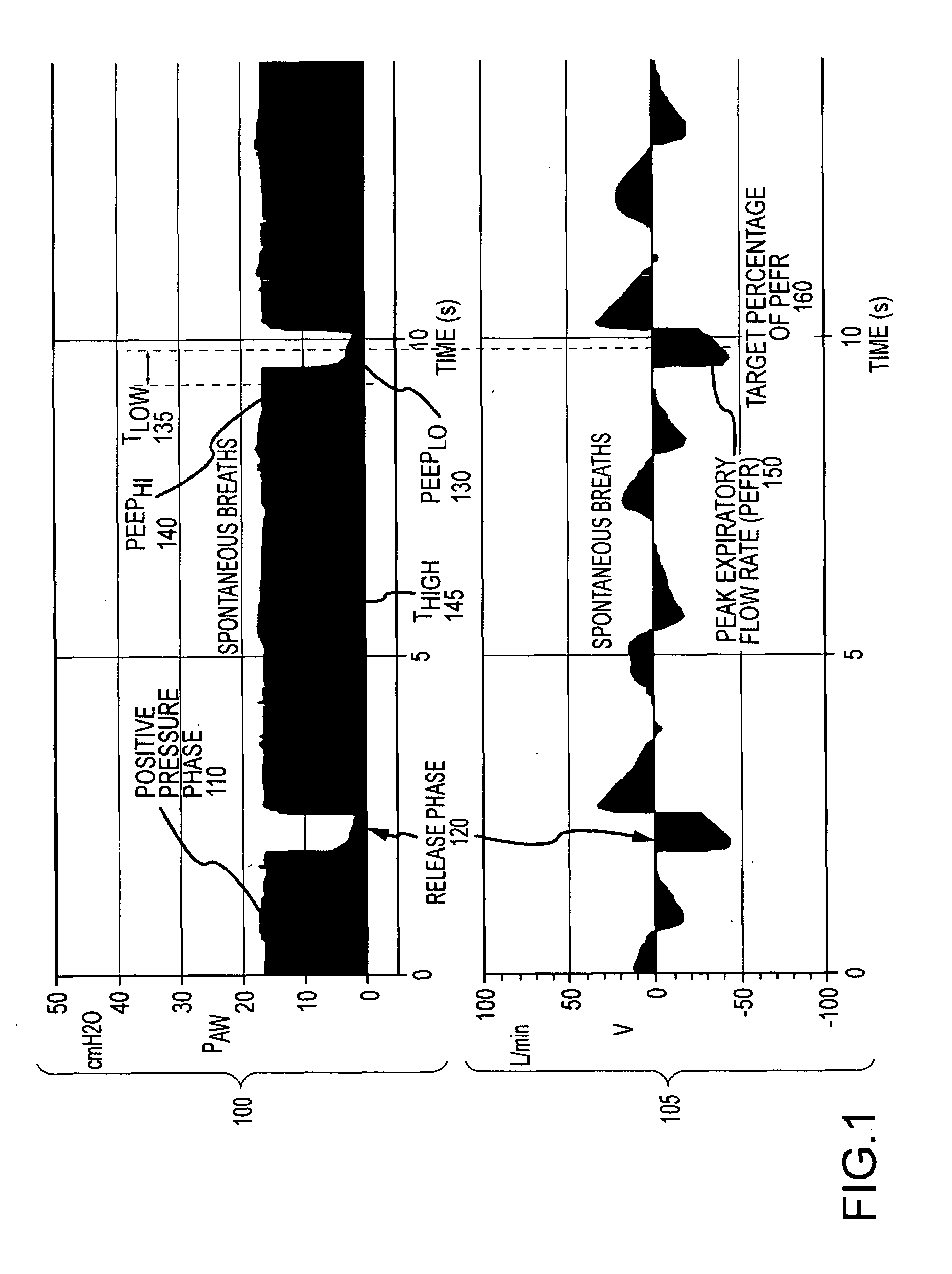Configuring the operation of an alternating pressure ventilation mode
a technology of alternating pressure and ventilation mode, which is applied in the direction of valves, respirators, operating means/releasing devices, etc., can solve the problems of not being able to and the clinician may not agree on an appropriate, fixed time value for t/sub>low /sub>135/b>, and may no longer achieve the desired physiologic respons
- Summary
- Abstract
- Description
- Claims
- Application Information
AI Technical Summary
Benefits of technology
Problems solved by technology
Method used
Image
Examples
Embodiment Construction
[0028]Systems and methods are described for configuring the operation of an alternating pressure ventilation mode. Increased clinical focus on recruitment of functional lung in various disease states has created a high degree of interest in using inverse inspiratory to expiratory time ratio (I:E ratio) alternating pressure ventilation modes. Such ventilation strategies are focused on maintaining the lungs in a distended state sufficient to keep all recruitable alveoli open, but to augment ventilation by periodically releasing pressure to allow better clearance of alveolar carbon dioxide. Various embodiments of the present invention provide an improved ventilation system user interface that both simplifies initiation of an alternating pressure ventilation mode and maintains the optimality of TLOW. In one embodiment of the present invention, rather than requiring the clinician to estimate TLOW based on the clinician's desired target percentage of PEFR, the clinician may directly input...
PUM
 Login to View More
Login to View More Abstract
Description
Claims
Application Information
 Login to View More
Login to View More - R&D
- Intellectual Property
- Life Sciences
- Materials
- Tech Scout
- Unparalleled Data Quality
- Higher Quality Content
- 60% Fewer Hallucinations
Browse by: Latest US Patents, China's latest patents, Technical Efficacy Thesaurus, Application Domain, Technology Topic, Popular Technical Reports.
© 2025 PatSnap. All rights reserved.Legal|Privacy policy|Modern Slavery Act Transparency Statement|Sitemap|About US| Contact US: help@patsnap.com



